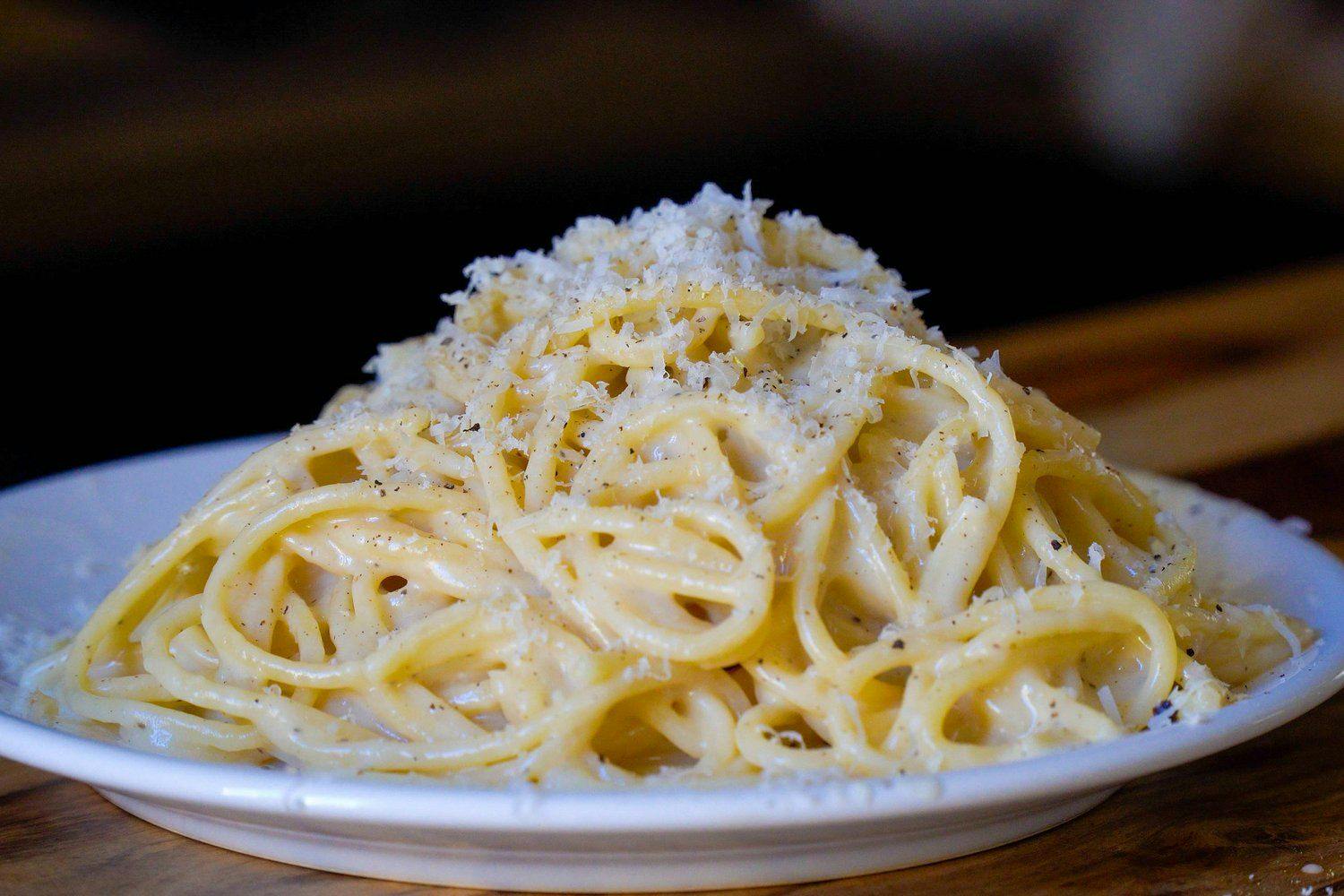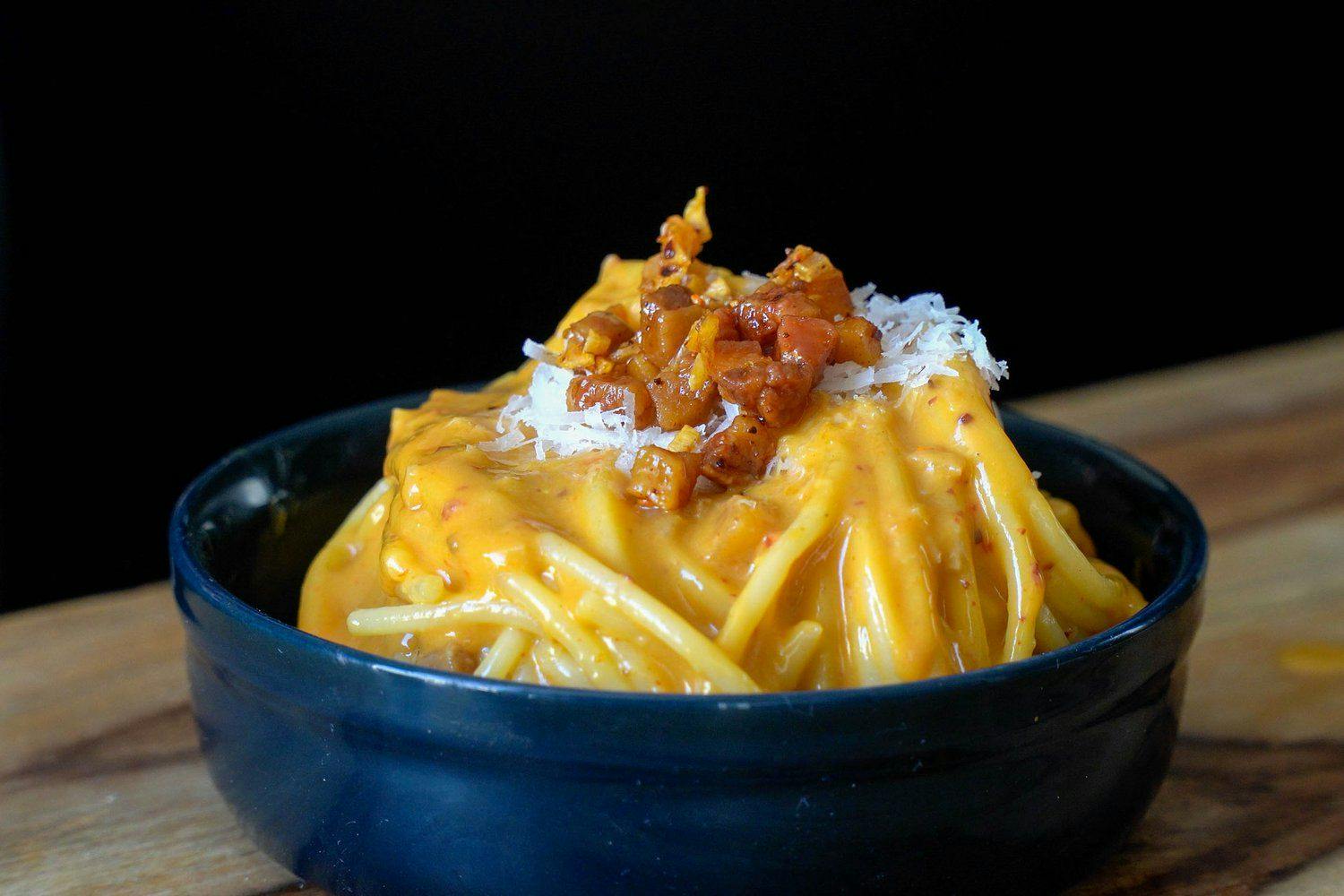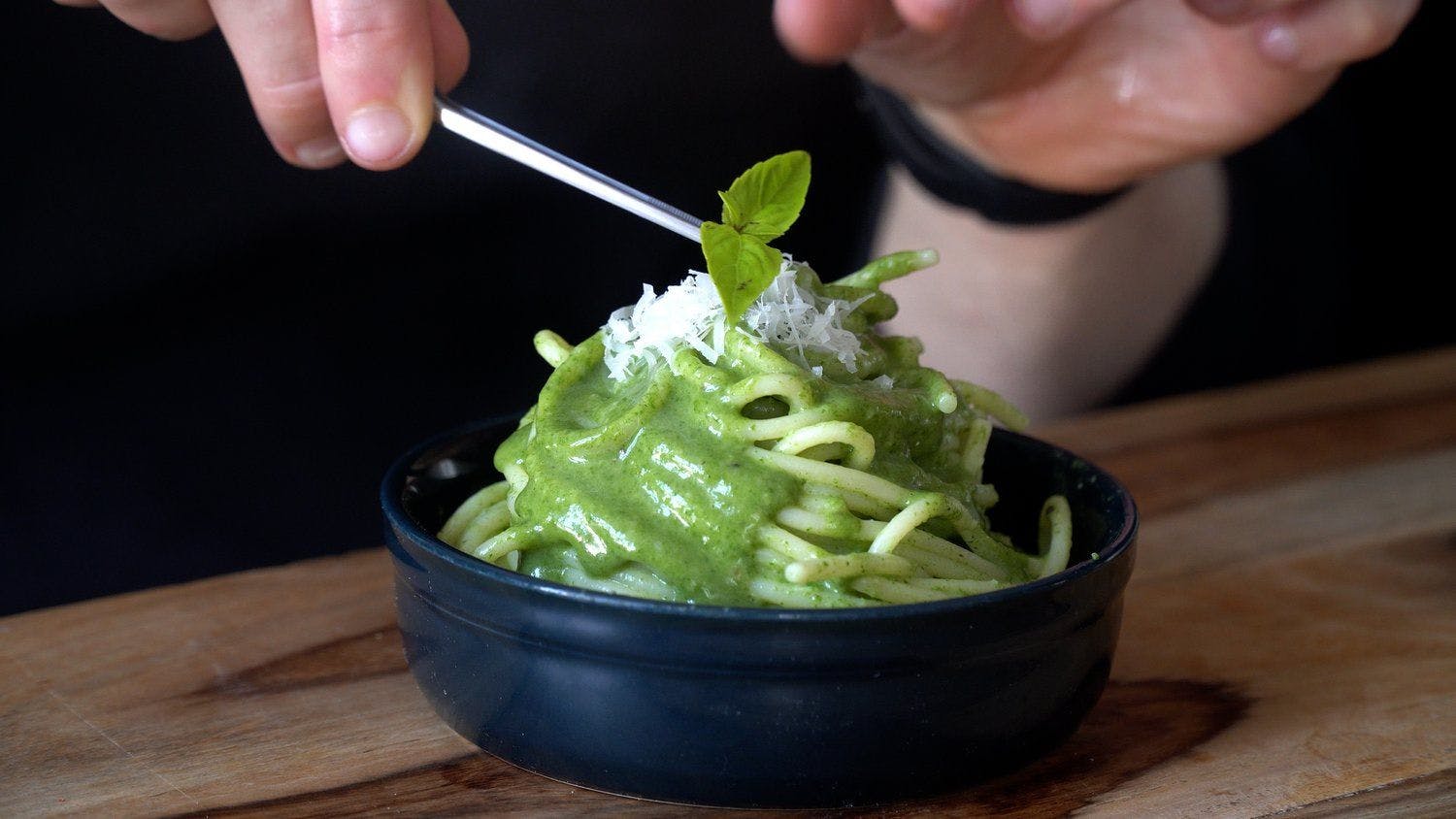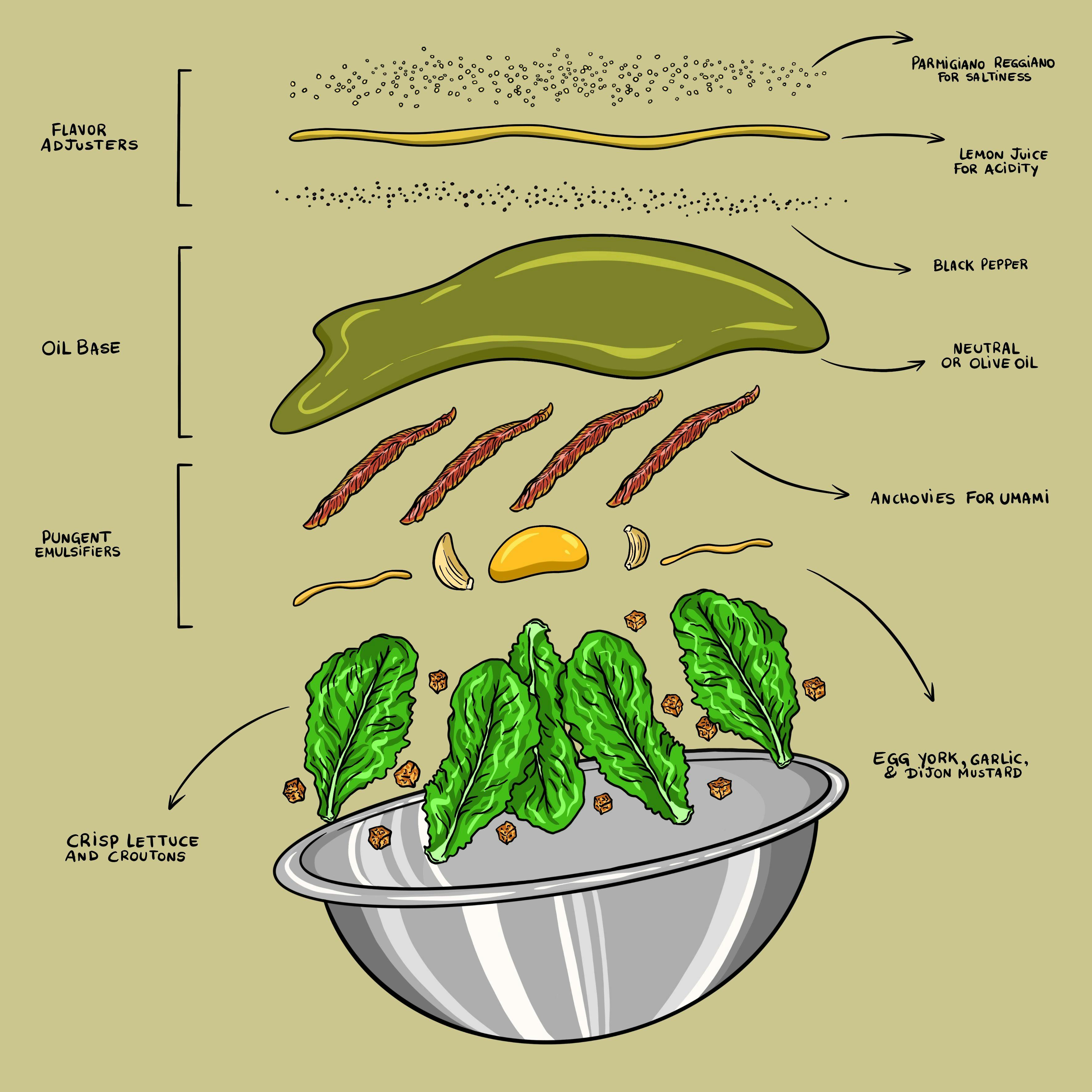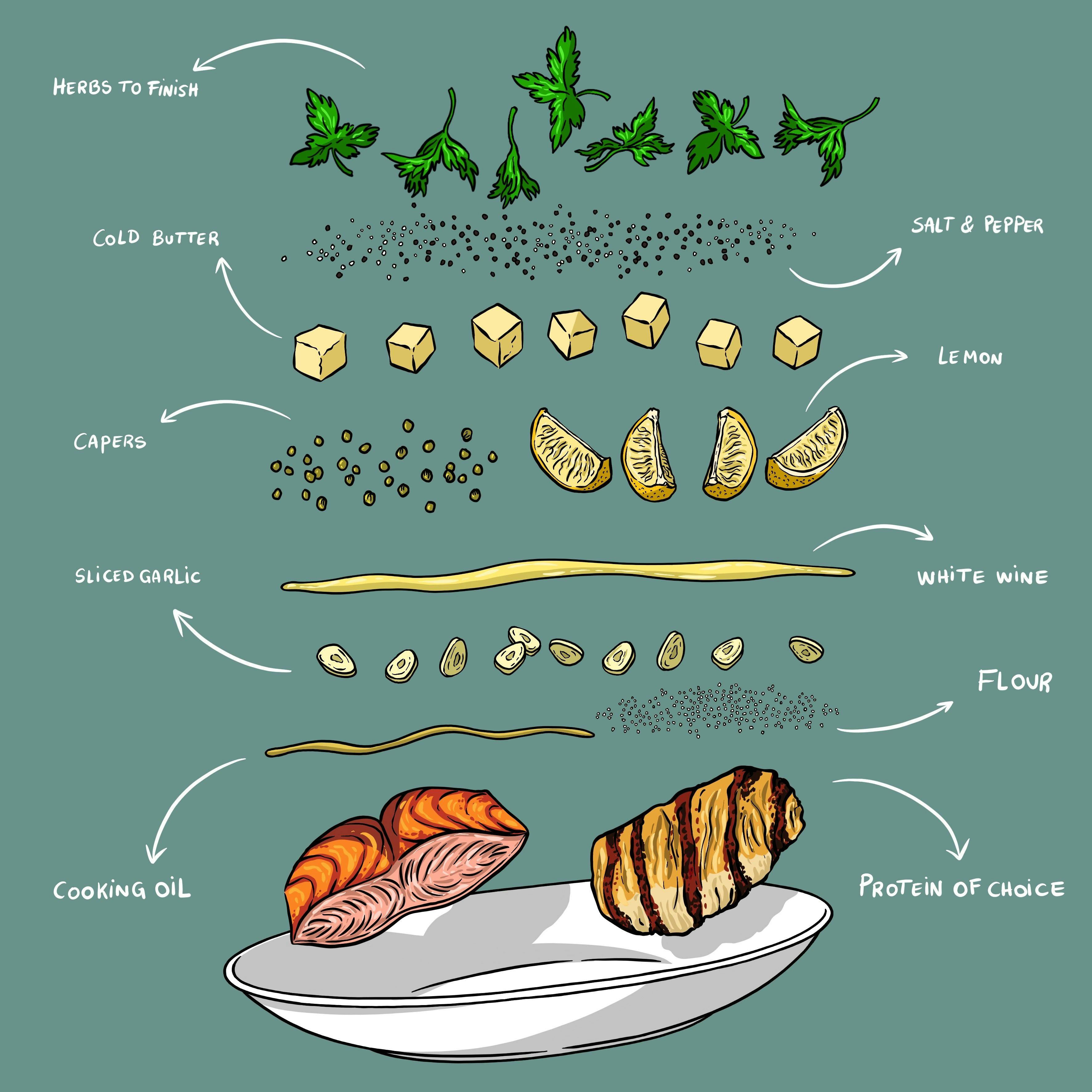Creating a stable mixture of water and oil based liquids.

What are the fundamentals of emulsification?
Emulsification is the process of bringing two substances that don’t usually mix — like and — together into a stable mixture. Properly emulsified sauces or condiments can be enjoyed as a coherent substance instead of a greasy, broken mixture.
Emulsification happens by force, usually by incremental whisking or blending, to disperse the oil and water into tiny droplets that become intermixed with each other, often held together by an emulsifying agent.
- Egg yolks are a common emulsifier because they contain lecithin, a powerful binder.
- Other common emulsifiers are mustard, honey, and garlic, which have special surfactant qualities to facilitate emulsions, such as in a vinaigrette.
- Butter is already an emulsion of milk fats and water content, and can be used to jumpstart the emulsion process in a liquid sauce.
- Starches (like a corn starch slurry, a roux, or gums) can help emulsions stabilize, although this has more to do with their properties.
Heat can break an emulsion, depending on the strength of the emulsifier used. In the case of weak butter-based emulsions, the substance can split if heated to only 180°F/82°C. Processed foods (like American cheese) often contain powerful emulsifying salts (like sodium citrate), which can keep oils and fats connected even at high heat (like in mac & cheese).
➡️ Catalyst: Physical force, emulsifying agent
🛠️ Relevant techniques:
🔬 Relevant molecules:
Example foods
- Mayonaise
- Vinaigrettes
- Toom & aioli
- Butter & cheese
- Pan sauces
How does emulsification affect the elements of flavor?
In order of importance:
— Emulsions primarily affect texture — they can take loose liquid ingredients and combine them into a thicker substance. A properly made emulsion is creamy and unctuous, but a split emulsion would have a greasy and unpleasant mouthfeel.
— Emulsifying ingredients together show up in every cuisine around the world, which isn’t a surprise because emulsions will naturally happen when you mix or pound ingredients together, such as in a pesto, mole, or toum.
— The viscosity of a sauce or dip can immediately change how we perceive an eating experience, for better or worse. We’ve come to appreciate the texture of thick, spreadable dips and creamy sauces. By contrast, a split or greasy sauce can be unappetizing.
— Emulsions do not affect aromas themselves but are a great way to carry aromatic compounds since both water and fat are present (unlocking both water or fat-soluble compounds)
— Emulsions don’t alter the taste of ingredients.
— Emulsified foods don’t have a physical effect on the body.

